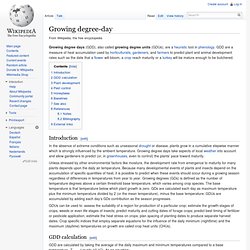

Falgro%20Tablets%20E_UCP. How To Make Natural Garden Pesticides. Garden pests are one of the few things that can make the otherwise enjoyable task of gardening frustrating.

Whether it's snails taking over your lettuce or aphids sucking on your roses, a pest infestation is definitely disappointing, but it's not a reason to reach for harmful, toxic sprays. The sprays might eliminate the pesky culprits, but they are harmful to you and the environment. Instead, try whipping up one of these simple recipes with ingredients you most likely have on hand. What You Need Materials Spray bottles Biodegradable liquid dish soap Lemon or orange essential oil Cooking oil Baking soda Garlic Chili powder water Natural Insecticidal Soap Spray.
Fruitandvg_PPAH. Agricultural Marketing Resource Center - Processed Tomatoes Profile. By Hayley Boriss and Henrich Brunke, Agricultural Issues Center, University of California.

Revised April 2011. For more information or specific inquiries, please contact Linda Naeve, content specialist, AgMRC, Iowa State University, lnaeve@iastate.edu. Overview The U.S. tomato processing industry, comprised primarily of tomato pastes, sauces and canned tomato products, is distinctly separate from the fresh-market industry. Specific characteristic differences separate tomatoes entering the two markets: fresh-market varieties are juicier and harvested prior to being ripe, while processing varieties contain higher percentages of soluble solids, are vine ripened and typically have a thicker skin than fresh-market tomatoes to survive mechanical harvesting and bulk transport.
The marketing methods of the two industry segments differ as well. Market Structure Nearly 100 percent of processing tomatoes are produced and sold under contract between growers and processing firms. Exhibition of Agricultural Science and Technology. Identification of Diseases and Disorders of Onions. 6Chapter%205_Agriculture.
Heat Unit Calculator - HORT410 - Vegetable Crops - Department of Horticulture and Landscape Architecture - Purdue University. Heat Unit Calculator The growth and development of both plants and insects is strongly temperature dependent.

Their temperature-dependent growth and development is often described as requiring a certain number of "heat units". Daily heat units are calculated as the difference between the average of the daily maximum and minimum temperatures and a certain critical basal or developmental "threshold" temperature. The threshold temperature varies between species. For corn the threshold temperature is 50oF. The following program calculates and displays Heat Units for the numerical values of daily Maximum, Minimum and Threshold temperatures that you enter below. Heat Units = ((Maximum Temp. + Minimum Temp.)/2) - Threshold Temp. After entering the Maximum, Minimum and Threshold temperatures, click the Calculate button. Enter Daily Maximum Temperature (oF): Enter Daily Minimum Temperature (oF): Enter Threshold (Basal) Temperature (oF):
Growing-degree day. Growing degree days (GDD), also called growing degree units (GDUs), are a heuristic tool in phenology.

GDD are a measure of heat accumulation used by horticulturists, gardeners, and farmers to predict plant and animal development rates such as the date that a flower will bloom, a crop reach maturity or a turkey will be mature enough to be butchered. Introduction[edit] In the absence of extreme conditions such as unseasonal drought or disease, plants grow in a cumulative stepwise manner which is strongly influenced by the ambient temperature. Growing degree days take aspects of local weather into account and allow gardeners to predict (or, in greenhouses, even to control) the plants’ pace toward maturity. Unless stressed by other environmental factors like moisture, the development rate from emergence to maturity for many plants depends upon the daily air temperature. GDD calculation[edit] If the mean daily temperature is lower than the base temperature then GDD=0.
Plant development[edit] Canola. Canola is an oilseed crop that is mainly grown in the Western Cape.

Official crop forecasts for canola were only started in the 1997/98 production season. The area planted to canola increased by 47%, from 17 000 ha in the 1998/99 production season to 25 000 ha in the 1999/2000 season. The production also increased from 21 000 tons in 1998/99 to 23 000 tons in 1999/2000, which represents a 9% increase. Estimated plantings, production and yield of canola 1997/98 to1999/2000 are as follows: The production of canola in South Africa is expected to grow in future because the local demand for canola exceeds the local supply and good prices are therefore expected.
Canola competes with other plant oils, mainly sunflower oil and soya oil, on the local market. The biggest sales point for canola in the Western Cape is the industrial market because of its favourable emulsifying characteristics. Real Agriculture.com. Prunecanopy. Bn_lucerne_guidelines.pdf (application/pdf Object)
Pruning. Sugar cane. August 2009. I'm on a sprout kick.

I've tried sprouting broccoli seeds, alfafa seeds and mung beans.The mung beans worked fab...the rest died. So I have been eating mung bean sprouts on everything.. You name it, everything. I've even threatened my daughter when she wanted me to bake brownies that I would be adding a few healthy additives to the mix heheh. I'll never run out of these sumptiously crunchy little delicacies since I have a huge rotating harvest of them in my pantry . . . which now looks like a laboratory. Veggie Garden Info: Frost Protection.
Articles. Videos.